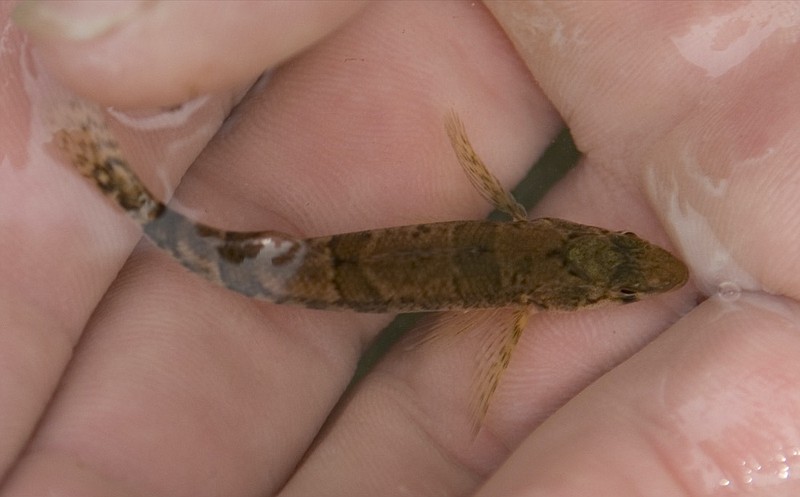NASHVILLE, Tenn. (AP) - The snail darter, a tiny fish that notoriously blocked a federal dam project in Tennessee decades ago, should no longer be on the endangered species list, federal officials announced on Tuesday.
Arguing that the fish is no longer in danger of extinction, the U.S. Fish and Wildlife Service has begun the process to delist the species, a move backed by the Center for Biological Diversity, an environmental group that has favored lifting protections for the fish since 2019.
"Thanks to the persistence of many people, the extinction of the snail darter was ultimately avoided, and today we can celebrate its recovery," said Zygmunt Plater, the attorney who wrote the citizens' petition to save the snail darter in 1975.
Snail darters, a member of the perch family, grow up to 3.5 inches (9 centimeters) long and mostly eat fresh-water snails. The darter was first listed as a federally endangered species in 1975, but later moved to "threatened" in 1984, meaning the species still faced a danger of extinction in the foreseeable future.
The fish garnered national attention shortly after the passage of the landmark 1973 Endangered Species Act. The law made it illegal to "harass, harm, pursue, hunt, shoot, wound, kill, trap, capture or collect" endangered animals, and forbid the elimination of their habitats. It led to many legal battles, but the struggle over the lowly darter became one of the most notable.
"The Endangered Species Act was passed to ensure all wildlife, even species that some might view as insignificant, deserve to be preserved for future generations," said Martha Williams, the federal agency's service principle deputy director. "It is very fitting that this fish, which was once a source of controversy, became the subject of cooperation and partnerships to save it."
Construction of the Tennessee Valley Authority's Tellico Dam in eastern Tennessee threatened the habitat of the newly discovered fish, located just above the site of the project. The case eventually made its way to the U.S. Supreme Court, marking the first time the nation's highest court took up an ESA case. In 1978, the court ruled in favor of protections for the fish and halted work on the nearly completed dam.
Congress later exempted the dam from the law to allow the project to be completed. However, the TVA worked to transplant the snail darter to other rivers and streams.
Federal officials say the TVA also worked to improve water flows and increase oxygen in more than 300 miles of river downstream from their dams. These steps helped boost the fish's recovery, allowing the snail darter to recolonize in Tennessee waterways. Its population has since been expanded to Alabama, Georgia and Mississippi.
More than 50 species have been removed from the ESA since the law was enacted, including bald eagles, peregrine falcons, Tennessee purple coneflowers and American alligators.
